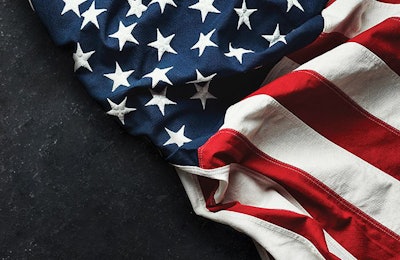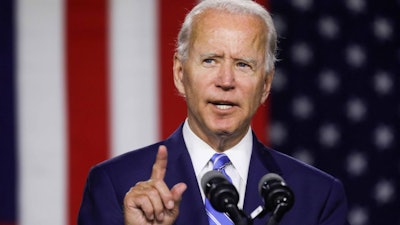
Biden’s focus on COVID-19 could bring new regulations to the feed industry
Americans may have elected Joe Biden in a bid for a return to normalcy. Nevertheless, while Biden’s take on the agricultural policy may bring more of the same in some respects, policy experts say it’s unlikely the feed industry will emerge from the COVID-19 pandemic unchanged.
The intense focus on COVID-19 throughout the 2020 presidential campaign meant Biden had little opportunity to discuss his position on myriad specific policy questions — including his take on matters of interest to the feed industry such as the Food Safety Modernization Act (FSMA) and trade policy. Based on his public statements about making the pandemic his top, essentially exclusive priority, it seems these questions won’t rise to the new president’s list of priorities for some time.
But analysts and industry leaders generally agree the feed industry won’t be exempt from new regulation in the early months and years of the Biden administration. Many believe it is likely that the Occupational Safety and Health Administration (OSHA) or another federal agency will make guidelines implemented during the pandemic mandatory, particularly in industries such as animal agriculture and feed, where workplace outbreaks of COVID-19 resulted in significant supply chain disruption. As the dust settles, experts say the industry can expect Biden to continue certain changes begun by the Trump administration, such as increased funding for the Food & Drug Administration (FDA), while also resuming the interest taken by the Obama administration in food safety — with a new emphasis on worker safety, supply chain resiliency and digitization.
“COVID is still the priority,” said Justin Prochnow, an attorney who follows the FDA for Greenberg Traurig Law, “and until that gets resolved, everything is on hold.”
Focus on worker safety
Biden isn’t the only one who will remain focused on addressing the pandemic through the first months of 2021. Worker safety — and the distribution of newly available vaccines — are top of mind among feed industry officials as well, according to Leah Wilkinson, vice president of public policy and education at the American Feed Industry Association (AFIA).
Industry representatives will be focused in early 2021 on “making sure that as an essential business, that all of our businesses have access to the vaccine when it’s our time,” Wilkinson said. “We’re going to be making sure that continues to be a priority, and that we continue to be deemed essential, working with the states as they work on distribution.”
However, Wilkinson doubts that the end of the pandemic will be the last time the industry hears of COVID-19 “when it has obviously affected the lives and livelihood of millions of Americans.” She and other leaders believe OSHA will likely begin to evaluate how the pandemic unrolled and what could be done — and required — in the future.
“Similar to where the Food Safety Modernization Act came out in the middle of Obama’s presidency in reaction to a growing number of food recalls, I think it’s just a natural reaction” to codify the nation’s response to the COVID crisis, Prochnow said. Having a plan for responding to pandemics, he said, will become “standard operating procedure.”
While it’s not yet clear what kind of regulation may stem from COVID-19, many expect OSHA will step in and implement workplace standards related to risk assessment, social distancing and possibly employee screening, not just for COVID, but potentially a variety of similar kinds of health risks, Prochnow said, though he didn’t expect to see draft regulation on the matter until fall of 2021.
Brace for more regulation
More regulation will likely be a theme within the Biden administration, according to David Fairfield, senior vice president of the National Grain and Feed Association (NGFA). But not all of it will begin with Biden — at least some measures began under Trump.
Increased funding for the FDA’s animal food operations has long been a goal of AFIA, Wilkinson said, and, in the waning months of the Trump presidency, they finally managed to secure it. The results of that success will take effect over the course of Biden’s first term, and will likely result in an increase in regulatory activity — including more expeditious review and approval of new feed ingredients.
“Those people have been hired, they’re being trained, and we’re hopeful that we can see some response and review time go down in future years,” Wilkinson said.
With Biden at the helm, the FDA and other agencies could stand to receive even more federal dollars, Prochnow said.
“Over the last four years, Trump directed a lot of funds away from the FDA and the EPA,” Prochnow said, “and with more funds, I would expect to see more activity.”
This funding and the expedited approval process that could follow will be critical to dealing with another potential outcome of a Biden administration, according to Wilkinson. With a stated interest in using climate change to revamp the U.S. economy post-COVID, Biden is likely to take steps to curb emissions from different industries, including animal agriculture. But to achieve those goals, Wilkinson said, will require access to new solutions.
“Our companies are coming out with innovations and new technologies to try to solve some of these problems like climate change, and they are not easy things to get reviewed because they are complex ingredients,” Wilkinson said. “What we say and how we can market them is difficult.”
More funding could also mean more inspections and other regulatory activity — impacts Fairfield said have so far been curtailed due to COVID-19. Inspections are likely to ramp up toward the middle of 2021 as the vaccine becomes more available, he predicted. But the pandemic could have a lasting impact in this arena as well, as regulatory agencies consider which inspections must be conducted in person and which could be conducted remotely to conserve resources.
“I think we will probably see some kind of communication from the FDA about remote assessments in the near future,” Fairfield said. “I think the program was initiated largely due to COVID, but I think it is a concept the agencies had interest in for some time.”
Fairfield said that the FDA had brought up the possibility of remote inspections before COVID. Nevertheless, many in the feed industry had opposed the idea out of concern that the FDA could take the information presented for inspection out of context. For that reason, he expects that whatever remote activity to continue after COVID will remain voluntary, at least at first, to build trust.
“I think participation in the animal food industry will really depend on the experience of any facility that chooses to put a toe out and get involved,” Fairfield said.
Wilkinson said she is also keeping an eye on the FDA’s ongoing work on a “Smarter Food Safety Blueprint,” begun under Trump, that aims to use technologies such as blockchain and extensive databases to enhance tracking of outbreaks and ingredients.
“We want to make sure that when there are items implemented for that, our voice is heard,” Wilkinson said, “because we do have a diverse set of members and they are spread out geographically. … We need to make sure anything that implements technology is something that can be implemented with limits in broadband or whatever it may be, so our facilities are able to participate in that appropriately.”
 (Divya777 | Bigstock.com)
(Divya777 | Bigstock.com)Trade relations revamped
Technology and regulation aren’t the only areas Fairfield expects Biden will bring a return to Obama-era norms.
“I think under the Biden administration, we’ll likely see more of a transition to a multilateral approach, rather than the singular type of agreements the Trump administration was focused on,” he said. “I think we’ll see more engagement with the World Trade Organization than in the Trump administration, and more emphasis on working within that framework.”
At the American Soybean Association (ASA), director of government affairs Virginia Houston said Biden’s election has brought a sense of optimism that international relations will improve, and opportunities for trade increase.
Relations with China, of course, are at the top of the watch list, as are negotiations between the U.S. and Mexico, Houston said. But the soybean association is also looking for re-engagement on the Trans-Pacific Partnership (TPP) and sees Africa as a key region where the U.S. would benefit from increased trading partnerships.
“I think Africa represents a really underutilized potential for the U.S,” she said. “We are behind the EU as far as on-the-ground presences, and behind China on [financial] investment. If we could look at Africa as another axis for export, that would be really important for agriculture.”
Improved international relations will decrease the likelihood that U.S. agriculture will become the target of retaliatory tariffs, Houston said, but she thought it is unlikely that existing tariffs, particularly in China, would immediately. The recovery of international market share lost to Brazil and Argentina could take even longer to recover, she said.
“I think we would see some market recovery, but I can’t gauge how much,” she said.
The current emphasis on dealing with COVID is likely to further delay any recovery, Houston added.
“I don’t anticipate trade agreements being a huge priority in the first year or so,” she said. “Once things calm down, we might see more options. … So much is going to depend, honestly, on COVID.”










